Authors: Felipe Antonio Honorato and Guilherme Silva Pires de Freitas
ADV Editors: Sanet Solomon and Alireza Shakiba
Introduction
At the turn of the 19th century to the 20th century large waves of white European immigrants arrived in Brazil, being part of a “modernization” project of the nation (Hasenbalg, 2005): between 1877 and 1903, the country received about 71 thousand immigrants per year; between 1904 and 1930, this number increased to 79 thousand annually (Wermuth 2020). In the early 2000s, the profile of the immigrants who started having the country as their destination was different. These people were, in their vast majority, refugees or humanitarian visa holders, non-white persons coming from developing countries with a non-Western cultural background: Syria, Angola, Haiti, Senegal, and Nigeria.
A significant amount of these contemporary flows coming to Brazil corresponds to immigrants from the current Democratic Republic of the Congo (DRC). Immersed in instability that has lasted more than two decades, the African country is the origin point of massive and intense migratory movements: the international non-governmental organization Human Rights Watch argues that the obstacles faced in the DRC meant that just in 2018 more than 4.5 million people had to be forcibly displaced in the country and around other 13 million persons needed humanitarian aid (Martuscelli, 2020).
DRC: a contextualization
Between April and July 1994, the former Republic of Zaire[1]received over a million refugees from Rwanda (Flahaux & Schoumaker, 2016). In the neighboring country, the last genocide of the 20th century had taken place: Hutu radicals had massacred Tutsis, as in the previous years the Hutus political elite, in charge of the Rwandan government, endorsed nationalist rhetoric that blamed the Tutsis for being enemies of the homeland, because they cooperated with the Belgian colonial rule (Belgium occupied the region between 1924 and 1962) (Mamdani, 2002). The tragedy profoundly changed the political and social panorama in the Democratic Republic of the Congo.
The 1994 genocide in Rwanda ended up advancing into the Congolese territory: Uganda, Rwanda, Burundi, and Angola formed a military alliance to defeat Hutu extremist militias operating from Congolese soil and help allied groups remove Joseph Mobutu, the dictator who commanded the Democratic Republic of the Congo for 32 years (from 1965 to 1997) (Kisangani & Bobb, 2010), from power; also, South Kivu local government tried to expel Rwandan refugees living in the province, leading them to ask the new Tutsi-dominated national government of Rwanda for help (Kisangani & Bobb, 2010). All these factors generated a conflict called the First Congo War, which took place between 1996 and 1997. Rwandan soldiers started to fight Mobutu’s army in October 1996 (Kisangani & Bobb, 2010). The Alliance des Forces Démocratiques pour la Libération du Congo (AFDL), an anti-Mobutu group backed by the military alliance headed by Rwanda, reached Kinshasa on May 17th, 1997 (Kisangani & Bobb, 2010). The day before, May 16th, Joseph Mobutu fled to Togo and then went into exile in Morocco (Kisangani & Bobb, 2010); AFDL’s spokesperson, Laurent Kabila, assumed the Congolese presidency (Kisangani & Bobb, 2010). The First Congolese War resulted in 200,000 deaths (Silva, 2012).
After assuming the Presidency, Kabila began to adopt a rigid nationalist stance in his decisions. This created divergences with other African countries. In addition, Rwanda, Uganda, and Burundi continued to finance militias based in the Eastern DRC after the end of the First Congolese War as it allowed them to explore the mineral wealth of the region. The sum of these two facts resulted in the outbreak of the Second Congo War, which started in 1998 and ended in 2003. It claimed the lives of 3.8 million people and produced the most casualties since World War II (Silva, 2012). The conflict was dubbed “the African World War” due to the number of troops from distinct African countries present in Congolese territory. This included troops from Rwanda, Uganda, Burundi, Angola, Namibia, Zimbabwe, and Chad. According to Silva (2012), the Second Congo War threw the DRC into a “state of violence.” The reorganization of the national State after the end of the war incorporated, through the mechanisms of power-sharing, many of the groups involved in the struggle into the government and the armed forces (Silva, 2012). This was a factor that contributed a lot to the perpetuation of violence (Silva, 2012). This context made the DRC the origin point of massive and intense migratory flows: the Congolese State estimates that there are 7 million Congolese immigrants in the world (Demart, 2013).
Congolese immigration to Brazil
Until the 1980s Belgium, as the DRC’s former colonial metropolis, was the preferred destination for Congolese immigrants outside the African continent. This, however, changed and migration flows departing from the DRC have gained new trends:
“France has become the preferred end point since the late 1990s (Figure 2), possibly as a result of greater ease getting visas and of obtaining asylum, and better labor market opportunities. Recent estimates indicate that France and Belgium together host more than 100,000 Congolese migrants, and that more than 50,000 others live elsewhere in Europe (including Germany, the Netherlands, Italy, and the United Kingdom […] Outside Europe, the United States and Canada have also become increasingly popular destinations since the 1990s (see Figure 2), each now hosting nearly 30,000 Congolese immigrants. This growing interest is also found among would-be migrants in surveys conducted in Kinshasa. Congolese migration to the United States has taken off since 2005, making the United States the second most popular Congolese destination outside Africa. Refugees and asylees represent a large share of Congolese obtaining permanent status in the United States, around 60 percent over the 2005-13 period. But the face of Congolese migration to the United States has been changing rapidly, with a growing share arriving via the diversity visa program (almost 40 percent of Congolese immigrants in 2013)” (Flahaux & Schoumaker, 2016).
In short, with the end of civil wars in the Democratic Republic of the Congo, the country entered a “state of violence,” which diversified the destinations of Congolese in the diaspora: it had extrapolated the neighboring countries, Belgium and France, and reached the Americas. It is in this context that Brazil is inserted: the rise in the country’s international attention due to its economic growth and the holding of major sporting events in the early 2000s were the main motivations for the South American nation to consolidate itself as a target for Congolese immigrants in the beginning of the 21st century (Martuscelli, 2020).
Profiling Congolese immigration in Brazil
Between 1998 and 2006, 122 Congolese were recognized as refugees in Brazil (Santos, 2018). At the end of 2008, there were 340 DRC nationals with refugee status in the country (Santos, 2018). Two years later, in 2010, the number of Congolese recognized as refugees by the Brazilian State increased by 21.1%, from 340 in 2008 to 431 in 2010 (Santos, 2018). Between 2010 and 2014, the number of Congolese refugees recognized by Brazil underwent a positive variation of 70%, reaching a total number of 799 Congo nationals formally living as refugees in the country (Santos, 2018). It is worth noting that this increase was sparked by the escalation of violence in the DRC.
Camila Abreu dos Santos (2018) observes that among the nationalities that apply for asylum in Brazil, taking into account the holders of the request, the Congolese are the ones with the highest female share – 35.6%; this would be explained by the fact that “60% of the titular Congolese women are single or widows” (Santos, 2018, p. 41). The motivations for leaving Congo would be “persecution based on race/ethnicity (6%), religion (6%), social group (5%), political opinions (61%), serious and generalized violation of human rights (69% ), other reasons (8%)” (Santos, 2018, p. 45).
In “Family Reunification for Refugees in Brazil: What Are the Congolese Refugees Fighting For?” a subchapter of the article “Fighting for Family Reunification: the Congolese Experience in São Paulo, Brazil,” the author Patrícia Nabuco Martuscelli (2020) brings that since the 2010s there has been an increase in the number of Congolese seeking asylum in Brazil. A profile of Congolese refugees is presented, who are mostly men aged between 18 and 49 years old, with high school completed, income from R$ 1000 to R$ 2999, who know their rights, wish to obtain Brazilian nationality, and usually arrive alone due to adverse situations in the DRC such as political persecution, human rights violations, and armed conflicts. According to Martuscelli (2020), between 1998 and 2014, two-thirds of Congolese arrived in Brazil via international flights and the rest by sea. They settle mainly in São Paulo and Rio de Janeiro and attempt the process of family reunification, with the overwhelming majority of requests being made by male refugees.
Conclusion
The Congolese population in Brazil has been growing in recent decades. This can be attributed to existing refugee networks that remain attractive to Congolese descendants. According to Lyra (2005), these networks facilitate the immigration process as it provides immigrants with psychological and material support after their arrival. Additionally, they facilitate family reunions, intensify bonds and strengthen the sense of community.
Despite having a small refugee population, Brazil remains an option for Congolese refugees. Currently, the Congolese community in the country is mostly located in the states of São Paulo and Rio de Janeiro, working mainly in civil construction and informal jobs (Núcleo de Estudos de População “Elza Berquo”, 2022).
References
Demart, S. (2013). Congolese Migration to Belgium and Postcolonial Perspectives. African Diaspora, 6 (1), 1-20. doi: 10.1163/18725457-12341239.
Flahaux, M. L.; & Schoumaker, B. (2016, April 20). Democratic Republic of the Congo: a migration history marked by crises and restrictions. Migration Information Source. https://www.migrationpolicy.org/article/democratic-republic-congo-migration-history-marked-crises-and-restrictions.
Hasenbalg, C. (2005). Discriminação e desigualdades raciais no Brasil. Belo Horizonte: Editora UFMG.
Kisangani, E. F., & Bobb, F. S. (2010). Historical dictionary of the Democratic Republic of the Congo. Lanham: The Scarecrow Press, Inc.
Lyra, M. R. S. de B. (2005). Sulanca x Muamba: rede social que alimenta a migração de retorno. São Paulo em Perspectiva, 19 (4), 144-154. doi: 10.1590/S0102-88392005000400010.
Mamdani, M. (2002). When victims become killers: colonialism, nativism, and the genocide in Rwanda. Princeton: Princeton University Press.
Martuscelli, P. N. (2020). Fighting for Family Reunification: theCongolese Experience in São Paulo, Brazil. Journal of Refugee Studies, 34 (3), 3399–3422. doi: 10.1093/jrs/feaa105.
Núcleo de Estudos de População “Elza Berquo”. (2022). Imigrantes Internacionais Registrados no Brasil (com Registro Nacional Migratório – RNM). https://www.nepo.unicamp.br/observatorio/bancointerativo/numeros-imigracao-internacional/sincre-sismigra/.
Santos, C. A. dos. (2018). Uma história de refúgio: narrativas de três irmãs negras do Congo no Distrito Federal. [Master’s dissertation, Universidade de Brasília].
Silva, I. C. (2012). Congo: a guerra mundial africana. Porto Alegre: Leitura XXI.
Wermuth, M. A. D. (2020). As políticas migratórias brasileiras do século XIX ao século XXI: uma leitura biopolítica do movimento pendular entre democracia e autoritarismo. Revista Direito e Práxis, 11(4), 2330-2358. https://doi.org/10.1590/2179-8966/2020/45137 .
[1] Between 1971 and 1997, the DRC was named Republic of Zaire (Kisangani & Bobb, 2010).
Felipe Antonio Honorato and Guilherme Silva Pires de Freitas are both Ph.D. students from the University of São Paulo’s Social Change and Political Participation post-graduate programme. Correspond with them through felipe.honorato@alumni.usp.br and guilhermespfreitas@usp.br.



